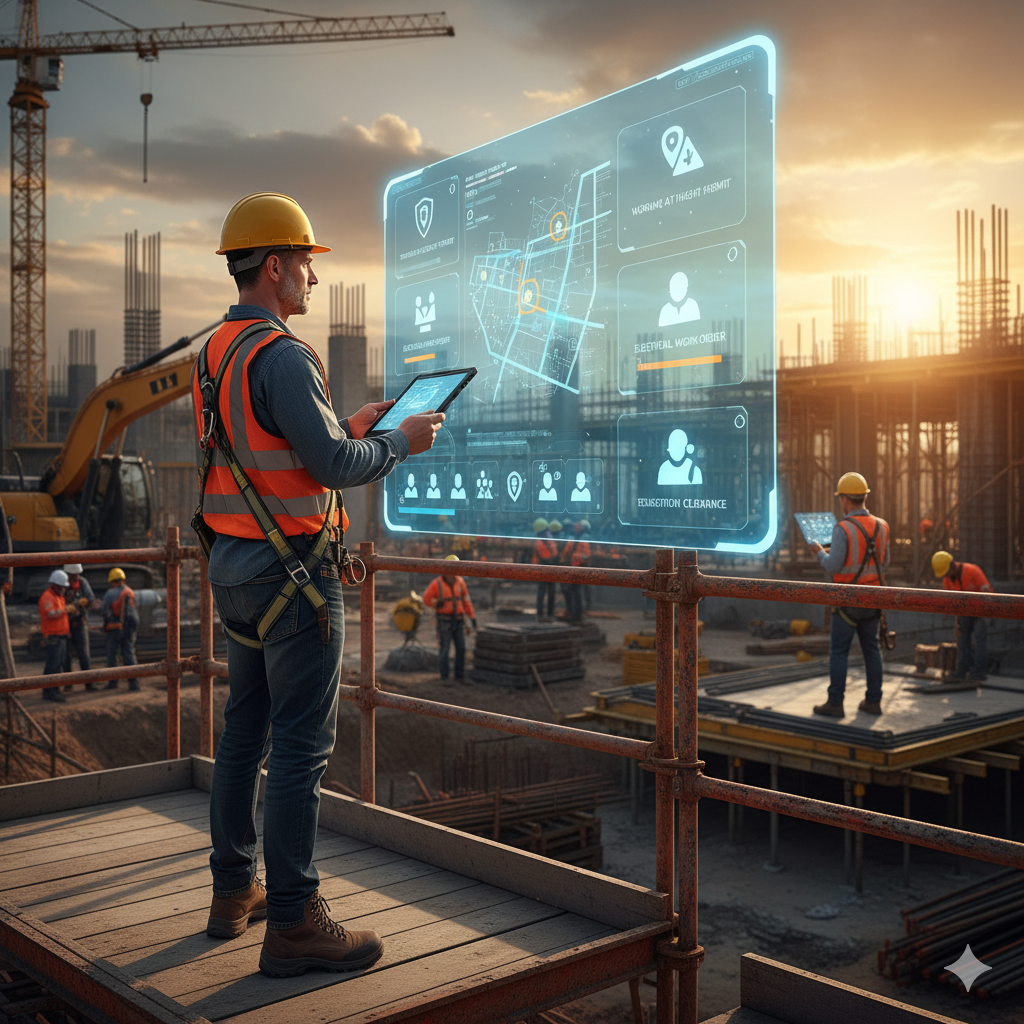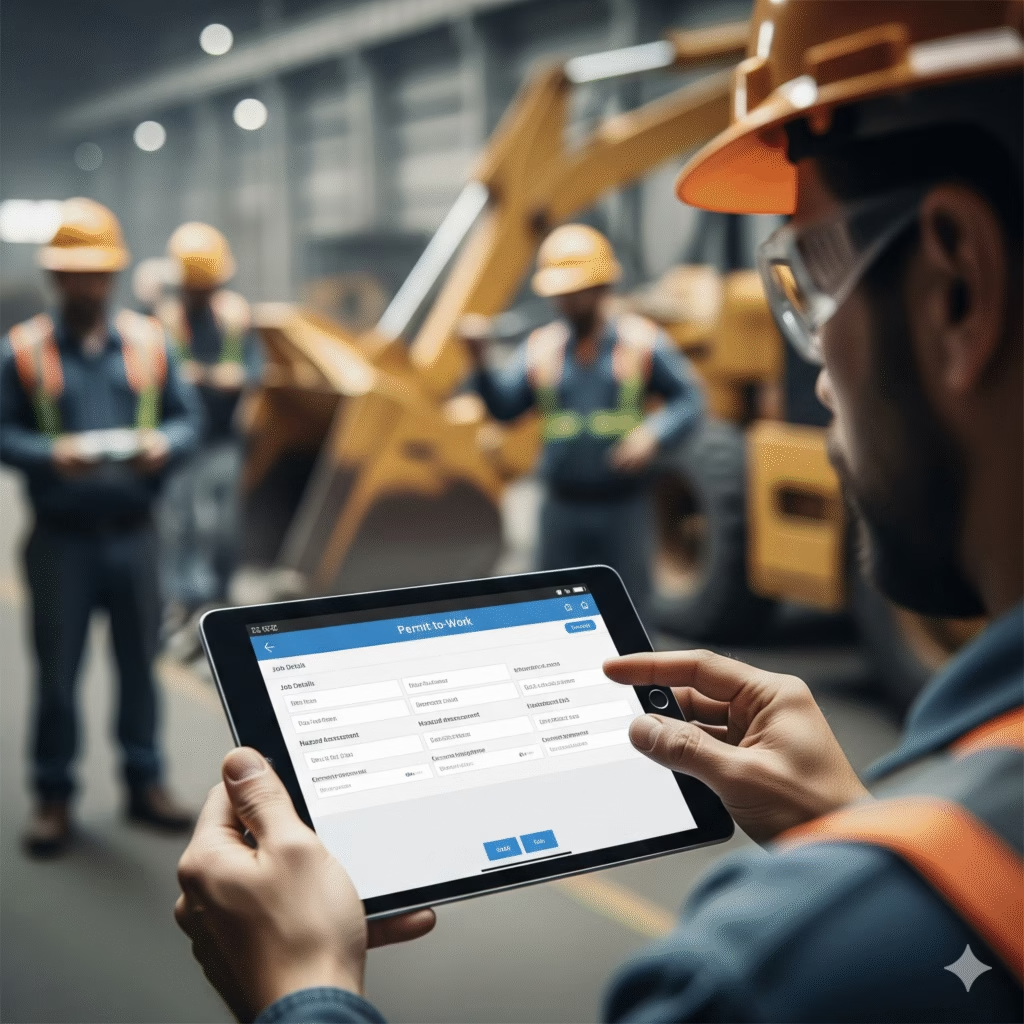Beyond Compliance: Using Digital PTW to Achieve Safety Excellence in Heavy Industry
Introduction
In recent years, many industries have been transforming from manual paper-based systems to digital solutions due to various challenges in managing EHS (Environment Health Safety) and operations. Organisations now realise the need to go digital to achieve better safety, reduce delays, ensure faster approvals, and eliminate long waiting times.
How OSHA Compliance Relates to PTW:
OSHA standards are safety rules designed to keep workplaces safe and healthy. By following them, companies create a culture of safety and accountability among workers.
A Digital Permit to Work (PTW) system makes OSHA compliance easier by covering high-risk activities like confined space entry, hot work, electrical maintenance, and more.
Every step — from hazard identification to approvals and supervision — is recorded and stored digitally, ensuring complete traceability and compliance with safety regulations.
Types of Work Permits and How Digital PTW Manages Them:
1. Confined Space Entry Permit
Before entering confined spaces, workers must ensure:
- Air testing confirms safe oxygen levels.
- PPE, air circulation, and gas detection systems are ready.
- A trained attendant is on standby.
- Emergency procedures are in place.
With Digital PTW, permits are instantly created, reviewed, and approved through mobile workflows — ensuring faster approvals and safer entries.
2. Hot Work Permit
For jobs involving heat, welding, or sparks:
- The area is checked for flammable materials.
- Fire extinguishers and fire blankets are available.
- Gas cylinders are properly stored.
- A fire watch person monitors the site.
Digital PTW automates this process by sending real-time alerts and reminders to safety officers, ensuring every fire safety condition is verified before work begins.
3. Cold Work Permit
Used for tasks like cleaning or maintenance that don’t produce heat or sparks:
- The site is hazard-free and well-ventilated.
- PPE such as gloves, masks, and helmets are worn.
- Tools and equipment are inspected.
Digital PTW ensures every step is verified, and supervisors can approve or reject permits remotely, improving both efficiency and compliance.
4. Electrical Work Permit
Protects workers from electrical hazards:
- The power supply is isolated and locked out (LOTO).
- Only authorised electricians perform the task.
- Warning signs are displayed clearly.
Digital PTW integrates with LOTO procedures, automatically checking that isolation steps are completed before approving the permit.
5. Working at Height Permit
For any job where there’s a risk of falling:
- Safety gear like belts and harnesses are mandatory.
- Weather conditions are checked.
- Emergency rescue plans are ready.
Supervisors can use the Digital PTW app to verify PPE compliance and track authorized workers in real time, ensuring safer work at heights.
6. Excavation Work Permit
Before digging or trenching:
- The area is checked for underground utilities.
- Warning signs and barriers are placed.
- Gas testing and safe access routes are confirmed.
Digital PTW ensures all risk and environmental checks are approved before excavation begins — reducing the chance of accidents.
Digital PTW Mobile App Features:
Digital PTW Mobile App Features
Empower your workforce with next-generation digital safety management tools — fast, smart, and secure.
Instant Notifications
Get real-time alerts on approvals and reminders directly to your mobile app, ensuring zero delays in safety actions.
Permit Management
Digitally request, review, and approve permits from anywhere with a smooth, multi-level authorization process.
Live Dashboard
Track work status, monitor safety KPIs, and view all permit data in one centralized, real-time dashboard.
AI Hazard Detection
AI-powered analytics help predict potential hazards before they happen, improving proactive safety measures.
Secure Access
Choose cloud or on-premise deployment with role-based access control to protect sensitive data efficiently.
Mobile Accessibility
Access and manage all safety permits anytime, anywhere with our fully responsive, mobile-first PTW platform.
Solutions for All Industries:
Our Digital PTW platform is available for both mobile and web applications, offering:
- Instant notifications for pending approvals.
- Easy digital submission and supervisor approval process.
- Live dashboard for real-time monitoring and tracking.
- AI-powered hazard identification using historical safety data.
- Flexible deployment — on-premises or cloud — based on organisational needs.
How Digital PTW Helps Achieve Safety Excellence:

To move beyond compliance, industries are focusing on:
- Full digital transformation of permit processes.
- Live visibility and performance tracking through dashboards.
- AI analytics for proactive hazard identification.
- Mobile-first approach for faster communication and approvals.
- Continuous improvement through safety data insights.
By adopting a Digital PTW system, industries not only comply with OSHA but also build a strong safety culture — where safety becomes everyone’s responsibility and every process is transparent.
Why Switch to a Digital PTW System:
- Save Time: No more late approvals or lost paperwork.
- AI-Based Risk Identification: Detect and analyse potential hazards in advance.
- Accuracy & Speed: Improve precision and response time for permit processes.
- Digital Transformation Partner: Simplify compliance and safety management with smart digital tools.
Conclusion:
Achieving safety excellence in heavy industries means going beyond basic compliance.
A digital permit-to-work system ensures streamlined approvals, complete OSHA documentation, and consistent worker protection.



